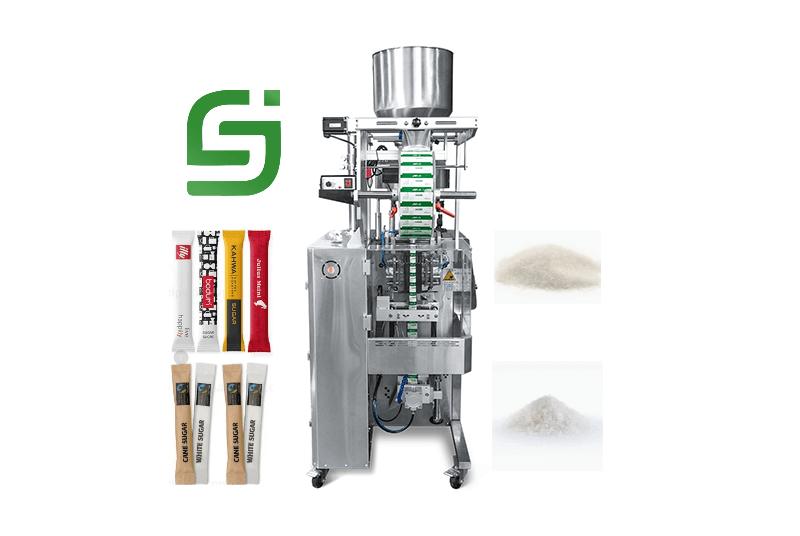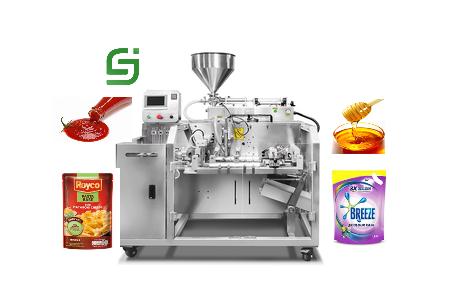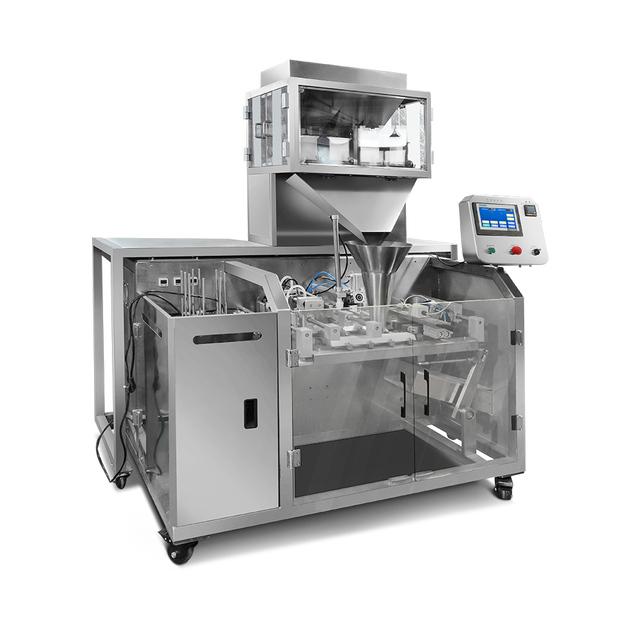Author:YISEN Pouch Packing Machine Manufacturer TIME:2024-11-07
Vertical Form Fill Seal (VFFS) packaging machines are essential tools in the modern packaging industry, designed to efficiently package a wide range of products, from food items to industrial goods. These machines combine multiple functions into one streamlined process, allowing for high-speed production with minimal manual intervention. Understanding how VFFS machines work can help businesses optimize their packaging operations and improve product shelf life.

The VFFS technology is built upon a simple yet effective principle: a continuous roll of film is transformed into a pouch, filled with product, and then sealed—all in one motion. The machine operates vertically, hence the name, allowing for gravity to assist in the filling process. This design minimizes the footprint of the machine while maximizing efficiency.

A typical VFFS machine consists of several key components. These include the film unwinding unit, forming station, filling station, sealing unit, and cutting mechanism. Each component plays a crucial role in ensuring that the packaging process runs smoothly and efficiently. The film unwinding unit dispenses the packaging material, while the forming station creates the desired pouch shape. The filling station introduces the product into the pouch, followed by the sealing unit, which secures the package before it is cut to the desired length.
The process starts with a roll of flat film, which is fed into the machine. As the film unwinds, it travels through a series of rollers that guide it into the forming station. Here, the film is shaped into a tube using heat and pressure, creating a seamless structure ready for filling. The edges of the film are heated to allow for proper sealing later on in the process.

Once the film is shaped, it moves to the filling station. Depending on the product being packaged, different filling mechanisms can be employed, such as volumetric fillers, auger fillers, or pump fillers. This versatility allows VFFS machines to accommodate various product types, including powders, granules, liquids, and solids. The filling process is synchronized with the movement of the film to ensure that each pouch receives the correct amount of product.
The sealing process is critical for maintaining product freshness and preventing contamination. After the pouch is filled, it moves to the sealing unit, where heat and pressure are applied to bond the edges of the film together. Various sealing techniques can be utilized, including heat sealing, cold sealing, and ultrasonic sealing, depending on the requirements of the product and the packaging material. Proper sealing ensures that the pouch remains airtight and secure.
After sealing, the machine cuts the pouches to the desired length, creating individual packages ready for distribution. The cutting mechanism can be adjusted to produce various pouch sizes based on product specifications. Once cut, the finished pouches are discharged from the machine, either manually or automatically, depending on the configuration of the production line.
One of the primary advantages of VFFS machines is their ability to increase production speed without sacrificing quality. The automation of the packaging process reduces labor costs and minimizes human error. Additionally, VFFS machines offer flexibility in terms of pouch shapes and sizes, making them suitable for a wide array of industries. Their compact design also saves valuable floor space in manufacturing facilities.
VFFS machines are commonly used across various industries. In the food sector, they package snacks, coffee, grains, and frozen items. They are also prevalent in the pharmaceutical industry for packaging powders and tablets. Non-food products, like detergents and pet food, also benefit from the efficiency and reliability of VFFS technology. The versatility of these machines makes them an invaluable asset for manufacturers looking to streamline their operations.
While VFFS machines offer numerous benefits, there are challenges to consider. Product variability can affect the accuracy of filling, requiring adjustments or specialized fillers. Additionally, maintenance is crucial to ensure optimal performance, as wear and tear can lead to downtime. Companies must also consider the compatibility of their chosen packaging materials with the machine’s specifications to avoid issues during production.
The VFFS packaging industry is evolving, driven by advancements in technology and changing consumer demands. Trends such as sustainable packaging solutions, increased use of automation, and smart technology integration are shaping the future of VFFS machines. Manufacturers are increasingly looking for ways to reduce waste, enhance efficiency, and provide innovative packaging options that meet market needs.
Vertical Form Fill Seal (VFFS) packaging machines play a pivotal role in modern packaging processes, offering efficiency, versatility, and reliability. By understanding the workings of these machines, businesses can optimize their packaging operations and respond effectively to market demands. As technology continues to advance, VFFS machines will remain at the forefront of packaging innovation, helping companies streamline their processes and enhance product quality.